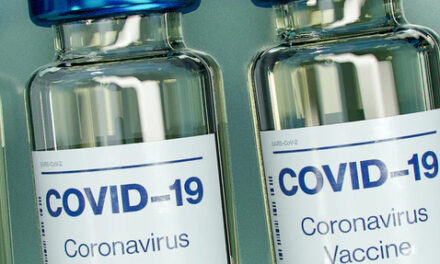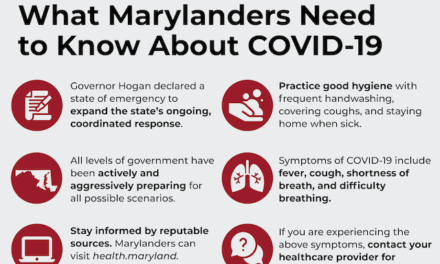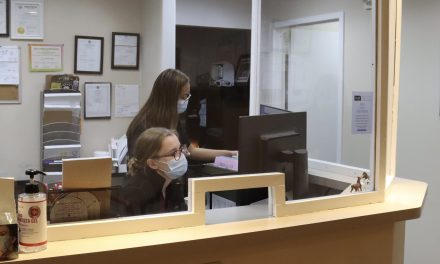Maryland’s waterways contain high levels of ‘forever chemicals’ pollution

Image by WikimediaImages from Pixabay
The Waterkeeper Alliance, a nonprofit global network of waterkeeper groups aiming for access to clean water everywhere, released a report in October to showcase findings from the past several months about U.S. waterways. The group collected samples from different bodies of water across the country and tested them for specific chemicals called per- and polyflouroalkyl substances, or PFAS.
The report was created to address the lack of information available about the presence of these chemicals and the dangers they pose. Kelly Hunter Foster, the senior attorney for the Waterkeeper Alliance and an author of the report, said that to her knowledge, this report is the first of its kind.
“With PFAS, we recognized that there was a huge data gap all across the country for PFAS data in surface waters,” Foster said. “Having this data available is important just for educating the public, but also, I think it’s important for the public that we bring data like this to the attention of state and federal regulatory agencies so we can do more monitoring and try to get the standards in place to prevent more of it from entering the environment.”
PFAS, which are widely used in many common industrial and consumer products, are also referred to as “forever chemicals,” according to the report. These “forever chemicals” stay in organisms indefinitely without breaking down and accumulate over time in people, animals and the environment. There are approximately 9,000 derivatives of PFAS, according to the report.
High exposure to PFAS can have several adverse health consequences, according to the U.S. Environmental Protection Agency. Some of these include reproductive issues like decreased fertility and high blood pressure during pregnancy, developmental effects or delays in children, increased risk of some forms of cancer, a weakened immune system and increased cholesterol levels.
People can be exposed to PFAS in several ways, such as drinking contaminated municipal water or private well water, eating food grown or raised near places that use or make PFAS, eating food packaged in materials containing PFAS and using certain consumer products that contain PFAS.
The report found that Maryland had the highest number of PFAS detections out of the 34 states sampled and Washington, D.C., with a total of 134 detections. Samples of Maryland’s waterbodies, particularly Piscataway Creek in Prince George’s County, also had high detection levels of PFAS.
Brent Walls is the Upper Potomac Riverkeeper for the Potomac Riverkeeper Network, which submitted three samples to the Waterkeeper Alliance’s report, including the sample from Piscataway Creek. He said the “hot zones” to look at for high PFAS levels will be areas where products were used at high levels for long periods. These areas tend to be close to military bases, airports and industrial users like wastewater treatment plants.
He also said areas used as firefighting training grounds are hot zones — during training for civilian firefighters and people in the military to put out aircraft fires, they will use AFFF, a fire suppressant that contains PFAS. And according to Walls, Piscataway Creek has a military base nearby which has used AFFF on the grounds by this waterway for decades.
Walls also noted the PFAS pollution issue is both economic and cultural. Certain communities, such as Indigenous and Latin American communities, have cultures deeply integrated with communing with nature, going to waterways and eating fish they catch.
“It’s going to impact everyone’s health. If I caught fish and ate it out of a stream, there’s chances I’m going to have high levels of PFAS in my system, but then again, if you buy fish at the supermarket, you still might have it because it’s not being tested for,” he said. “It’s a pollutant that doesn’t know color of skin or the size of your wallet. It is a pollutant that is impacting all of us.
The Maryland Department of the Environment declined to comment for this story. Spokesperson Jay Apperson sent the department’s page dedicated to PFAS, its risks and the work the department has done to address the issue.
Among these efforts include conducting samples of public water treatment systems in 2020 for PFAS and working with the cities where PFAS detection exceeded a safe level to improve their water treatment systems. The MDE has released reports on phases one and two of this water sampling initiative. Sampling for phase three finished up this past spring, according to the website, and the MDE will also release a report for this phase.
Walls believes Maryland’s efforts to address PFAS are ahead of other states in the Chesapeake Bay watershed. However, he said there’s still more work that can be done, such as the government implementing drinking water standards or requirements to test biosolids.
“The problem the states have — and it’s not completely their fault even though they do have the ability to make their own judgments — is when you have an EPA that hasn’t deemed PFAS as a toxic substance,” he said. “The states have to go out on a limb to do it.”
The Watergate Alliance’s report recommended several courses of action for Congress and EPA to target PFAS contamination in water and prioritize clean water access. These actions include passing Clean Water Act legislation, funding and implementing better water monitoring and prioritizing implementation and enforcement of clean water and cleanup legislation.
On an individual level, Walls encourages people to be vigilant about the food they’re consuming, as well as the products they’re using. For example, anything with a waterproof component to it contains PFAS. He also emphasizes that people write letters to state and federal governments urging them to address PFAS.
“The larger the voice that we have, the more headway that we’re going to make on this issue,” he said.






Recent Comments